Title : Emerging burden of non-tuberculous mycobacteria in MGIT-based tuberculosis cultures: Insights from South India
Abstract:
Background: Non-tuberculous mycobacteria (NTM) are increasingly recognized as clinically significant pathogens that can mimic Mycobacterium tuberculosis (MTB) in both clinical presentation and laboratory features. Because of intrinsic drug resistance and overlapping morphology, distinguishing them from MTB remains a challenge in diagnostic laboratories. This study aimed to determine the incidence and distribution of NTM among culture-positive mycobacterial samples processed at a tertiary-level diagnostic center in South India.
Methods: A retrospective cross-sectional analysis was conducted at Yoda Diagnostics, Hyderabad, covering the period from 16 May 2023 to 27 October 2025. A total of 932 clinical specimens received for mycobacterial culture were examined. Smear microscopy was performed using Ziehl–Neelsen staining, and cultures were processed in the BacT Alert MGIT 960 system. All culture-positive isolates were screened with the MPT-64 antigen rapid test to differentiate the MTB complex from NTM. Line Probe Assay (LPA) was used for NTM species identification, and drug-susceptibility testing was performed. De-identified data were compiled and analyzed descriptively.
Results: Of the 932 processed specimens, 143 (15.3%) yielded culture-positive isolates. The highest culture yield was obtained from broncho-alveolar lavage (69/287, 24%), followed by pus (31/103, 30%) and sputum (23/58, 40%). Among these, 91 (63.6%) were identified as MTB, 49 (34.3%) as NTM, and 3 (2.1%) showed mixed MTB + NTM growth. Pulmonary specimens — particularly BAL and sputum — accounted for nearly two-thirds of all NTM isolates (33/49, 67%), indicating pulmonary predominance. Extra-pulmonary NTM were infrequent, found mainly in tissue (3 cases) and lymph-node aspirates (4 cases). The male-to-female ratio favored males (~1.5:1). A progressive increase in both MTB and NTM isolations was observed over the study period.
Conclusion: This study demonstrates a notable and rising incidence of NTM infections among culturepositive mycobacterial samples in southern India. Differentiating NTM from MTB is essential for accurate diagnosis and management. Integrating rapid antigen screening and molecular species identification into routine workflows enhances laboratory precision and patient care. Continued regional surveillance is warranted to monitor emerging NTM species and evolving resistance patterns.
Keywords: Non-tuberculous mycobacteria (NTM); Mycobacterium tuberculosis (MTB); MPT64 antigen test; Line Probe Assay (LPA); MGIT culture; Hyderabad.



